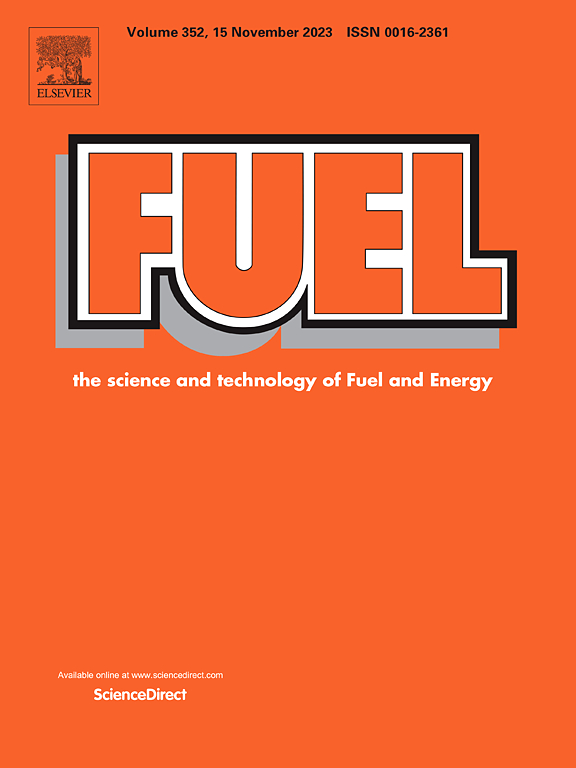Molecular simulation of CO2 foam injection to reduce water lock effect and enhance CH4 replacement in coal
IF 6.7
1区 工程技术
Q2 ENERGY & FUELS
引用次数: 0
Abstract
CO2 foam fracturing technology has gradually been utilized to fracture coalbed methane (CBM) wells over recent years with the advantages of low water consumption, high fracturing fluid return rate and the ability to displace CH4 in the coal reservoir. To explore the CH4 desorption mechanism affected by CO2 foam fracturing fluid injection into coal seam, the interaction microscopic mechanism between CH4/CO2/H2O as well as interaction with coal molecules was examined employing density functional theory (DFT). By injecting varying quality of CO2 foam (0% pure water, 20%, 40%, 60%, and 80%) into coal containing CH4, the water lock formation and the replacement and diffusion of CH4 following CO2 foam injection into coal were examined. The findings indicate that hydrogen bond facilitates the formation of H2O clusters, which attract CO2 and repel CH4. The greater adsorption and coexistence of CO2 and H2O encourage them to occupy adsorption sites on coal molecules and replace CH4. As the foam quality increased, the H2O cluster volume in the slit pores and the water film effect decreased, consequently weakening the water lock effect. The effect of CO2 and H2O co-adsorption on the coal matrix surface to replace adsorbed CH4 was gradually enhanced. The co-adsorption system for CO2/H2O with coal matrix was more stable after the injection of higher-quality CO2 foam, facilitating CH4 desorption. The CO2 adsorption depth within the coal matrix exceeded that of H2O, which could further replace adsorbed CH4. The diffusivity of adsorbed and free H2O was predominantly affected by clusters and hydrogen bonds. The diffusion coefficients of adsorbed CO2 and free CH4 and CO2 declined with enhanced CO2 foam quality, while the diffusion coefficient of adsorbed CH4 initially rose and then decreased. The research findings furnished a theoretical basis for CO2 foam to replace CH4 in coal seams to enhance the CBM recovery (CO2 foam-ECBM).
求助全文
约1分钟内获得全文
求助全文
来源期刊

Fuel
工程技术-工程:化工
CiteScore
12.80
自引率
20.30%
发文量
3506
审稿时长
64 days
期刊介绍:
The exploration of energy sources remains a critical matter of study. For the past nine decades, fuel has consistently held the forefront in primary research efforts within the field of energy science. This area of investigation encompasses a wide range of subjects, with a particular emphasis on emerging concerns like environmental factors and pollution.
 求助内容:
求助内容: 应助结果提醒方式:
应助结果提醒方式:


